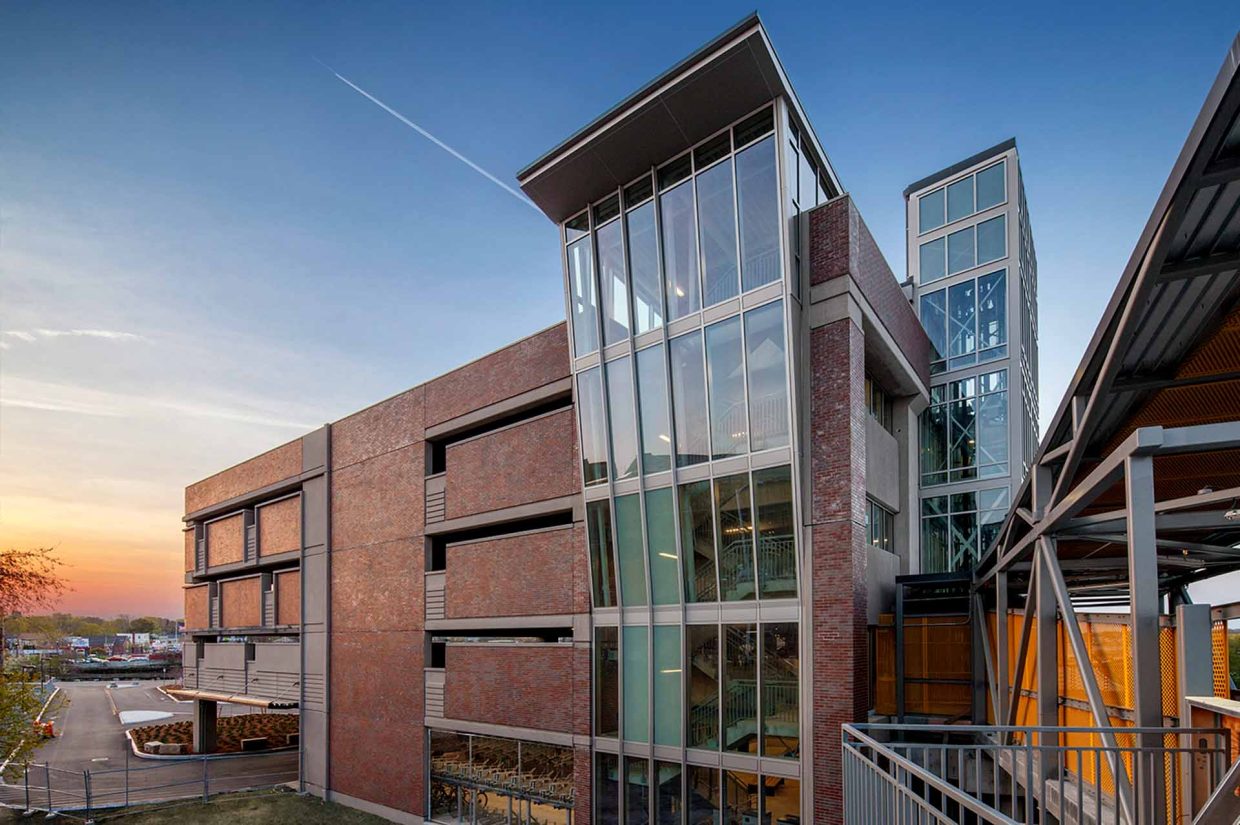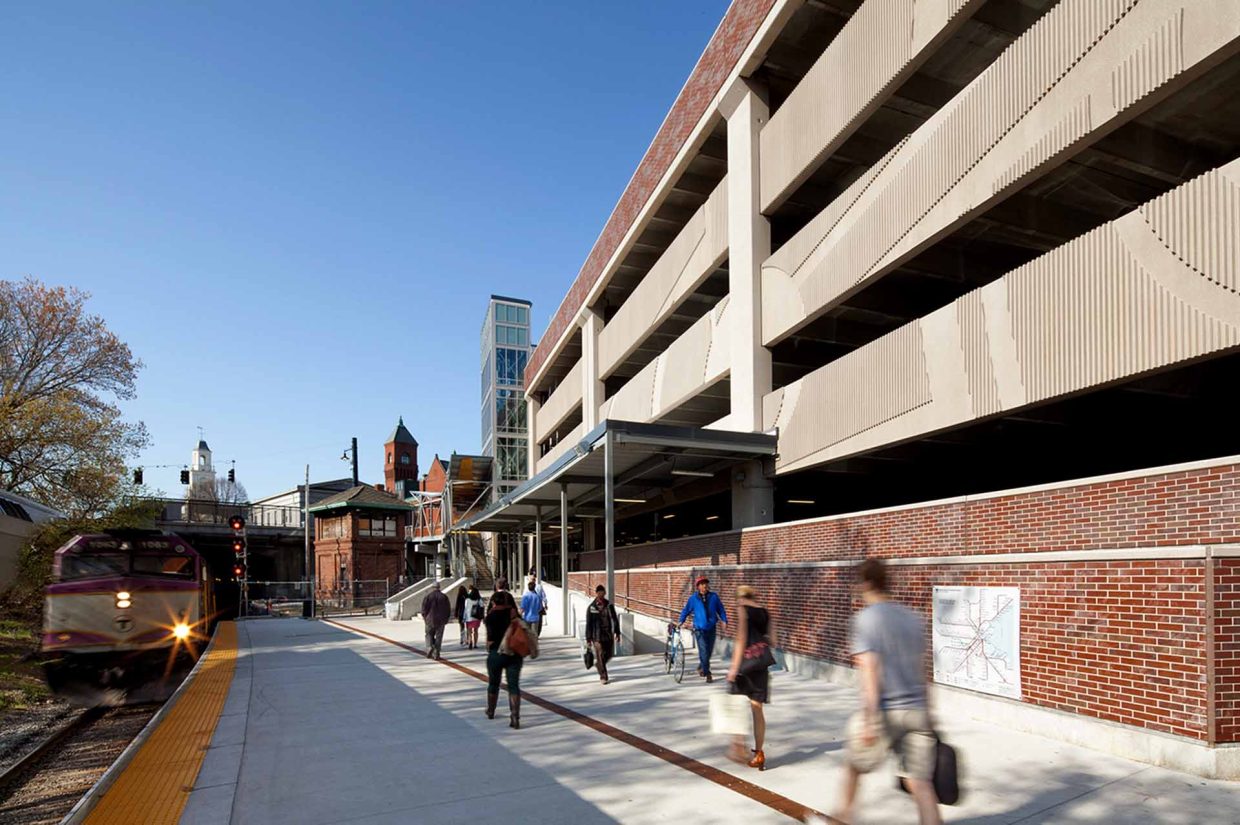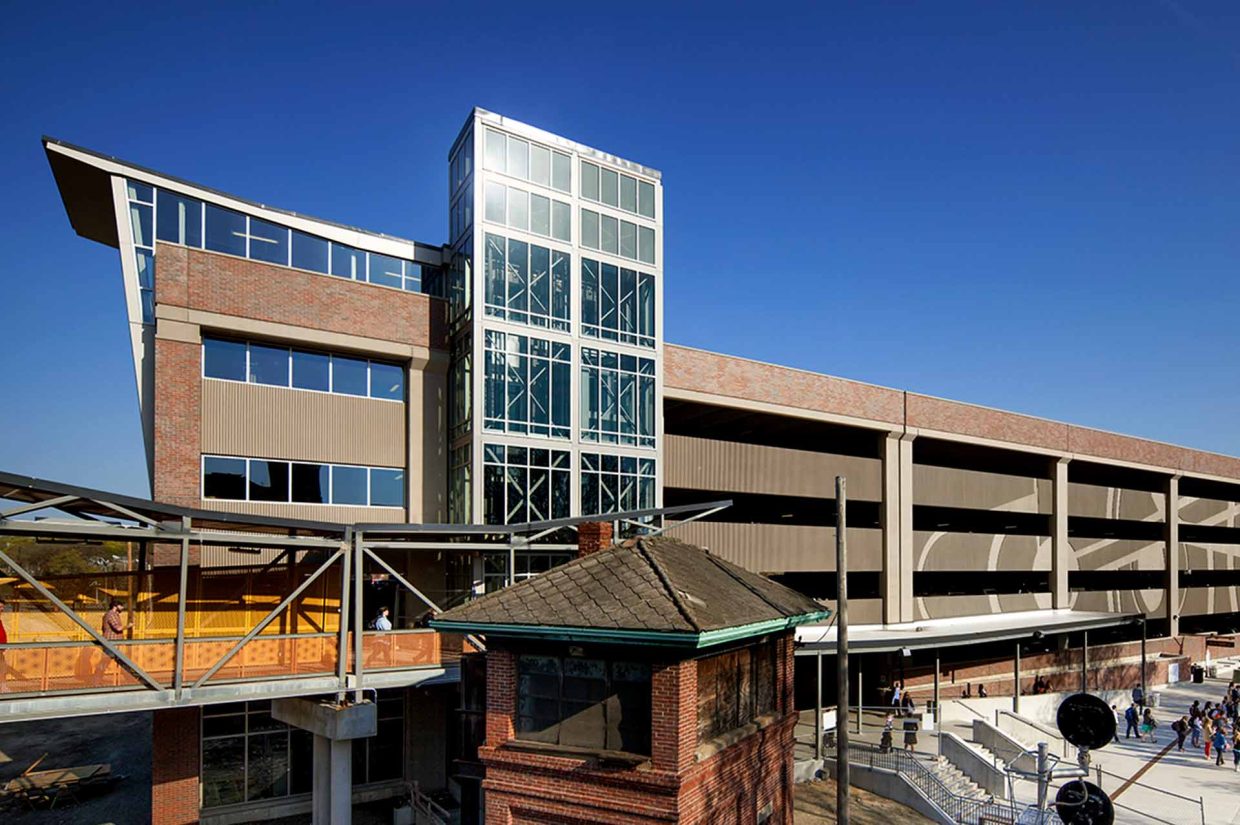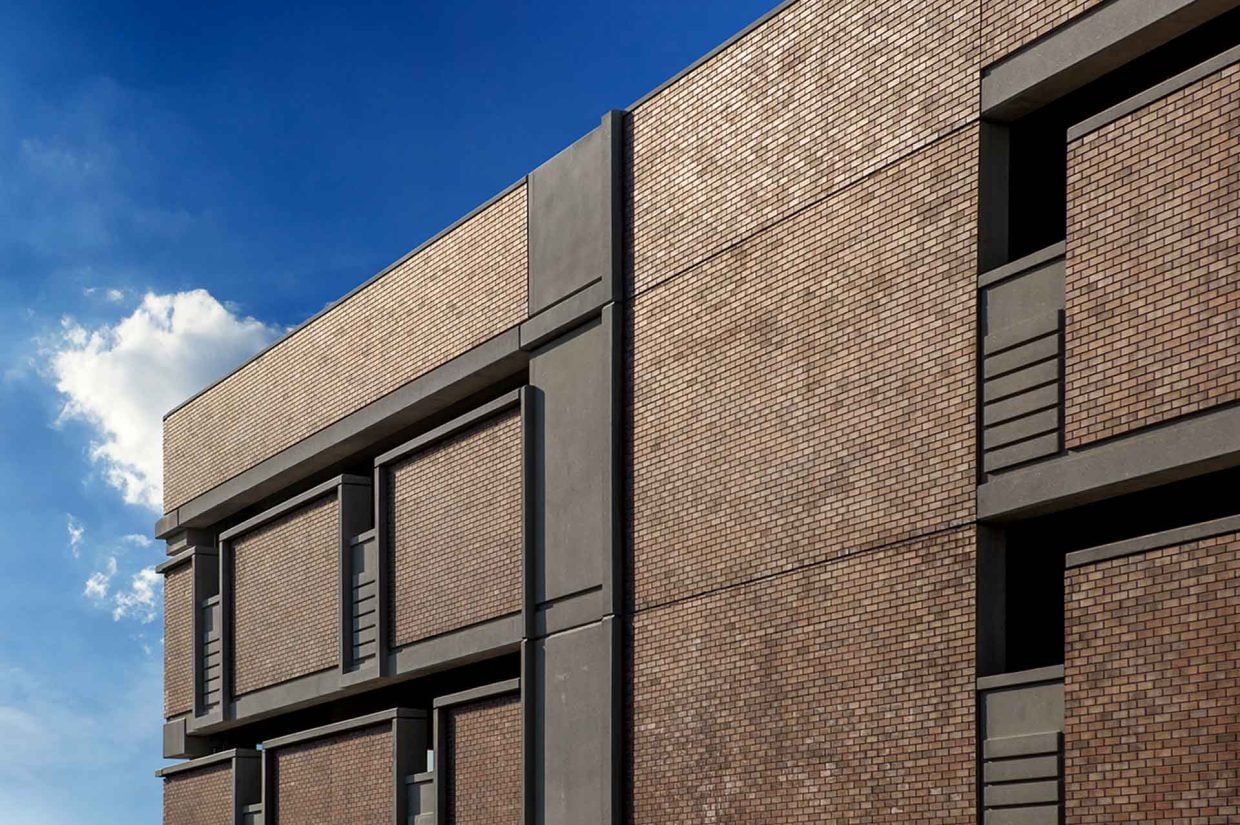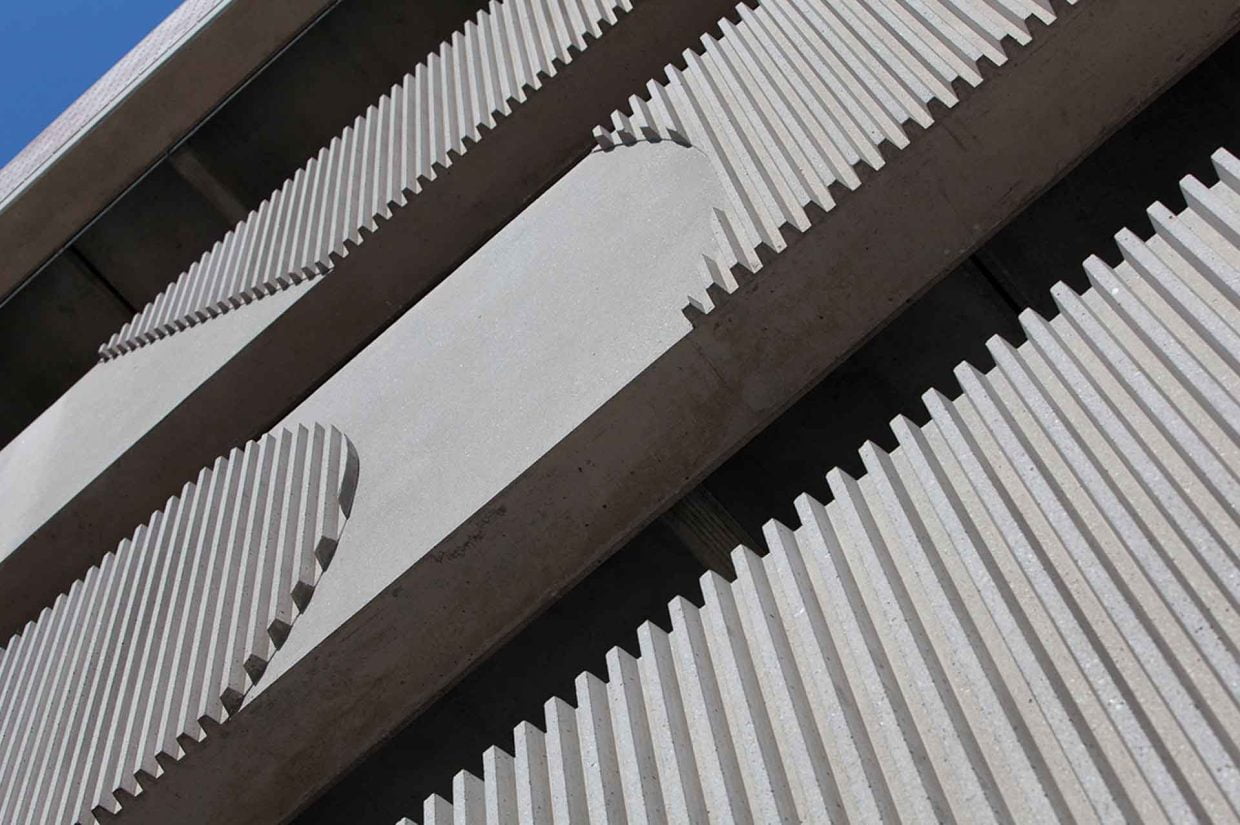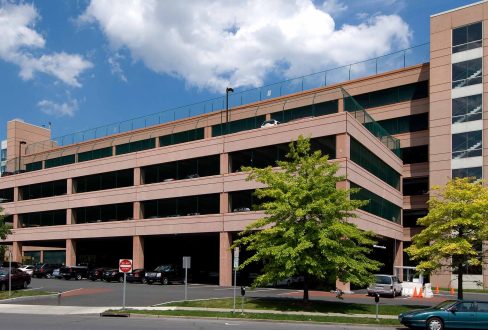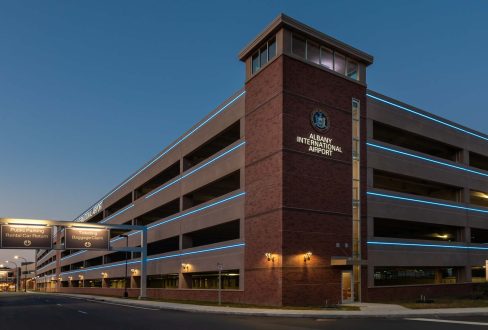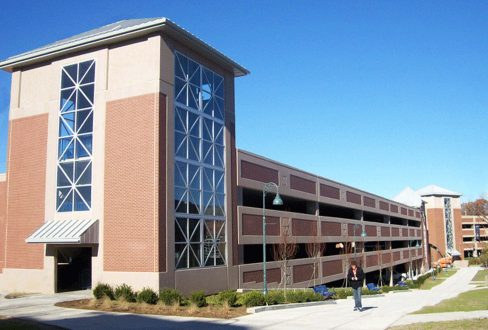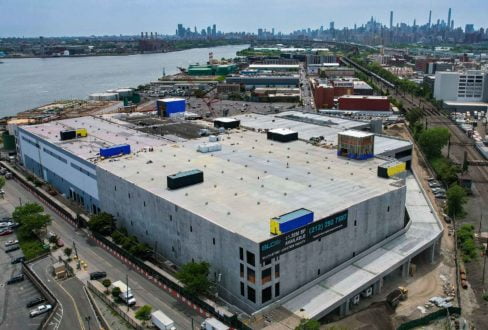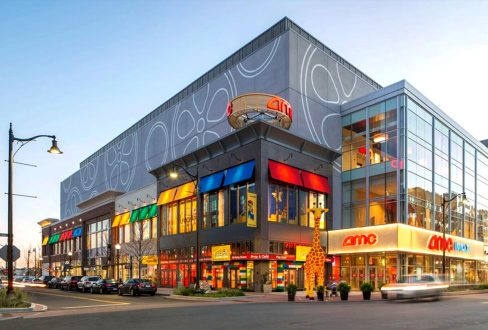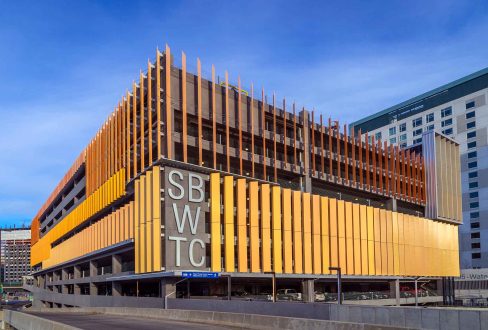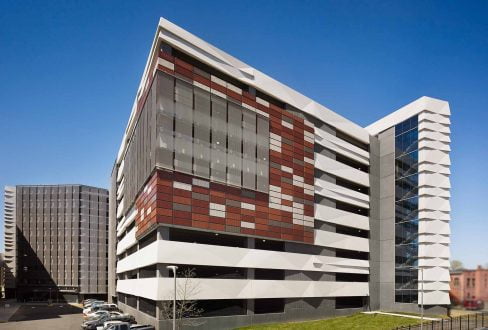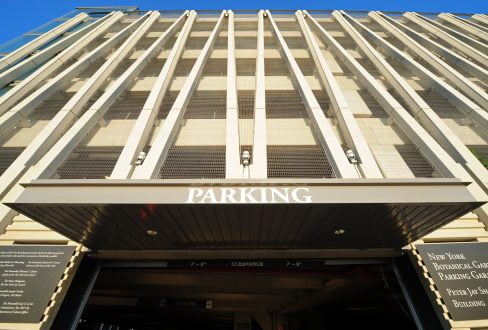The Massachusetts Bay Transit Authority (MBTA) Salem Intermodal Commuter Rail Station is a testament to the versatility and high-performance characteristics that precast concrete can bring to the design and detailing of a project.
Unistress embraced the artistic aspect of this and took extra care in constructing, handling, and placing these unique elements.
The rail station project has several major components, including excavation of the site, and construction of a five-level parking structure, a passenger waiting shelter, an at-grade bus platform, a taxi lane, a drop-off/pick-up area, pedestrian sidewalks, and a pedestrian bridge, connecting a raised street to the second level of the structure. The use of precast concrete allowed the project architects and engineers to fast-track the schedule. The precast concrete pieces were fabricated while soil modification and foundations were being installed, then erected quickly. This was critical to making the completion date required by the stakeholders. Additionally, the use of embedded brick significantly reduced the need for future maintenance associated with traditionally laid brick. Overall, the use of precast was preferred for the minimal maintenance and long-term durability demanded by the owner.
The layout of the site featured one end at grade level for the train station with a covered lobby and a covered drop-off, which drove a desire to maximize open space to enhance sightlines and pedestrian movement. The precast concrete design accommodates this goal through the use of lockup devices connecting double tees across the building joint between two segments of the garage, Clark says. “By transferring loads in this manner, shear walls in one direction were eliminated in one segment, providing the open space desired.”
Aesthetically, the use of precast concrete was also an attractive option for the design team. To acknowledge the historical significance of the former rail yard, which originally housed a locomotive roundhouse and turntable constructed in the late 1800s, the designers incorporated patterned precast concrete spandrels on the facade to evoke images of steam locomotive wheels and drive bars. The design was accomplished through the use of sculpted, deeply ribbed formliners.
“We loved the ability to embed the special railroad and local history right in the facade of the building by exploiting the plasticity of precast concrete,” Clark says. “Unistress embraced the artistic aspect of this and took extra care in constructing, handling, and placing these unique elements.”
Challenge
The project engineer employed lock-up devices to transfer seismic forces across the building expansion joint, eliminating the need for seismic shear walls.
Solution
Precast concrete allowed the designers to fast-track the schedule, which would not have been feasible using other cost-competitive methods.

